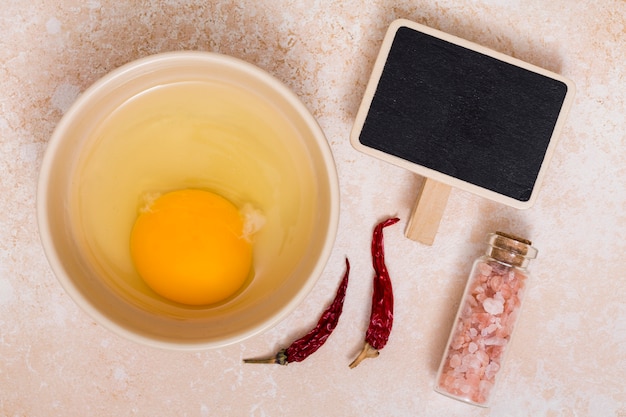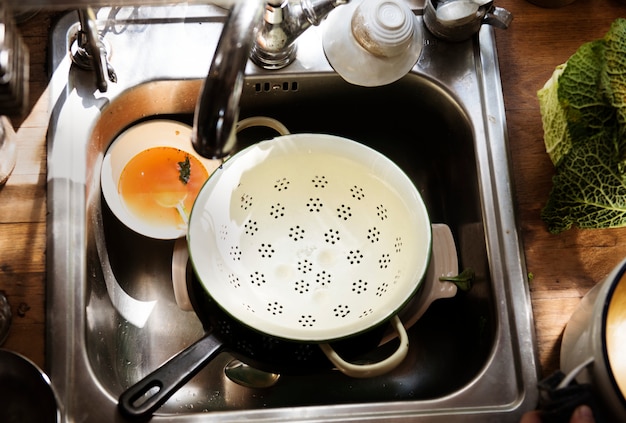There's nothing quite like the feeling of satisfaction that comes with a perfectly cooked bowl of ramen. The aroma of rich broth, the chewy noodles, the savory chashu pork... but the true masterpiece, the crowning jewel, is the ajitsuke tamago – the perfectly marinated soft-boiled egg. It's the element that elevates the entire ramen experience to another level.
I've been on a lifelong quest for the perfect ajitsuke tamago. I've spent countless hours experimenting in the kitchen, trying different recipes and techniques. I've even had a few "egg-splosions" along the way! But through all the trial and error, I've finally cracked the code (pun intended).
This comprehensive guide is your roadmap to ajitsuke tamago perfection. We'll unravel the science behind the perfect texture, delve into the art of marinating, and even explore common mistakes to avoid. By the end of this journey, you'll be a confident ajitsuke tamago master, ready to impress your friends and family with your ramen skills.
(Part 1) The Science of Texture: Unveiling the Secrets of the Perfect soft-boiled egg

The key to a truly stellar ajitsuke tamago lies in its texture. We're aiming for a yolk that's luxuriously creamy and runny, surrounded by a white that's cooked just enough to be tender, but not rubbery. This delicate balance of textures is a result of understanding the science behind how eggs coagulate.
The "Magic" Temperature: Cracking the Code
egg whites begin to solidify at a lower temperature, around 144°F (62°C), while the yolk requires a higher temperature, around 158°F (70°C). To achieve that perfectly soft-boiled texture, we need to cook the whites just enough to set them, but stop before the yolk starts to harden. This is the delicate dance that creates that perfect balance.
The Time Factor: Finding the Sweet Spot
cooking time is critical. The longer the egg is cooked, the firmer the yolk will become. A shorter cooking time will yield a runnier yolk. It's all about finding that sweet spot, that perfect balance of creamy yolk and tender white.
The 7-Minute Rule: A Solid Starting Point
After countless trials and errors, I've found that the 7-minute soft-boiled egg is the perfect starting point for ajitsuke tamago. It offers a good balance of texture and flavour. Here's how to achieve it:
- Bring a pot of water to a rolling boil.
- Carefully add the eggs, one at a time, using a slotted spoon to avoid cracking them.
- Reduce the heat to a gentle simmer.
- Cook for exactly 7 minutes.
- Immediately transfer the eggs to an ice bath (a bowl filled with cold water and ice) to halt the cooking process. This helps prevent the yolk from overcooking.
The "Egg Whisperer" Method: Testing for Texture Perfection
After the ice bath, gently crack the egg open and take a peek at the yolk. It should be a beautiful, runny, creamy orange, with a smooth consistency. The white should be cooked through, but still tender and not rubbery. If the yolk is hard or the white is too firm, adjust your cooking time accordingly. Remember, the "Egg Whisperer" method is all about finding that perfect texture balance.
(Part 2) Mastering the Marinade: The Essence of Ajitsuke Tamago Flavor

Now that you've mastered the art of creating the perfect soft-boiled egg, it's time to infuse it with flavour. This is where the magic of the marinade comes into play. The marinade is what transforms a simple egg into a flavour-packed ajitsuke tamago.
The Basic Foundation: A Harmony of Savory and Sweet
A good ajitsuke tamago marinade is all about achieving a perfect balance between savory and sweet flavours. This is typically achieved with a combination of soy sauce, mirin (sweet rice wine), and sugar.
The "Umami Bomb": Adding Depth of Flavour
To truly elevate your marinade, you need to introduce a touch of umami. This is the savoury, rich, and delicious fifth taste that adds complexity to your flavours. My personal favourite is dashi, the Japanese stock made from kombu seaweed and bonito flakes. It adds an incredible depth of flavour that will truly transform your ajitsuke tamago.
A Pinch of Spice: Adding a Kick
If you enjoy a little heat, add a pinch of black pepper or a dash of chili flakes to your marinade. It's a subtle way to add another dimension of flavour and spice up your ramen experience.
My Go-To Marinade Recipe: A Balanced Blend of Flavors
After years of experimentation, I've perfected my go-to marinade recipe, which strikes the perfect balance of savory, sweet, and umami:
| Ingredient | Quantity |
|---|---|
| Soy Sauce | 1/2 cup |
| Mirin | 1/4 cup |
| Sugar | 1 tablespoon |
| Dashi | 1/4 cup |
| Black Pepper | A pinch |
The Art of Marinating: Patience is Key
Once you've prepared your marinade, gently crack your soft-boiled eggs into a container. Pour the marinade over the eggs, ensuring they are fully submerged. Refrigerate for at least 4 hours, or preferably overnight, to allow the flavours to penetrate deeply.
The longer you marinate, the more intense the flavour will be. Don't be afraid to experiment with different marinating times to discover your preferred level of flavour.
(Part 3) The Art of Presentation: Adding Finishing Touches

Your ajitsuke tamago are now ready, but don't rush to add them to your ramen just yet. Presentation is key. It's the final step that elevates your ajitsuke tamago from delicious to truly stunning.
The "Egg-cellent" Peel: A Gentle Touch
Gently peel the eggs under cold running water. The cold water helps loosen the shell, making peeling easier. Be careful not to break the yolk. A gentle touch is essential here.
The "Slice of Heaven": Revealing the Beauty Within
For a truly impressive presentation, slice the eggs into rounds using a sharp knife. This reveals the beautiful, marbled yolk and the silken white, adding a touch of elegance to your ramen.
The Final Touches: Garnishing for Perfection
Add your perfectly sliced ajitsuke tamago to your ramen bowl. You can also add a sprinkle of chopped green onions or a drizzle of sesame oil for extra flavour and visual appeal. These final touches create a symphony of flavours and textures.
Your ramen is now complete, with the perfect ajitsuke tamago as its crowning glory. Take a moment to admire your creation before digging in and savoring the symphony of flavours.
(Part 4) The Common Mistakes and How to Avoid Them: Learning from Experience
Even the most experienced ramen enthusiasts can make a few mistakes when making ajitsuke tamago. Here's a guide to avoiding the pitfalls and ensuring your ramen eggs are perfect every time.
The "Overcooked" Egg: Don't Boil the Yolk
The biggest mistake is overcooking the eggs. This results in a hard yolk, which is a definite no-no for ajitsuke tamago. Stick to the 7-minute cooking time as a starting point, and adjust based on your desired texture. Remember, a runny yolk is the key to an excellent ajitsuke tamago.
The "Cracked" Egg: Handle with Care
Eggs are delicate. Be careful when transferring them to the boiling water and when peeling them. Avoid dropping or bumping the eggs as this can lead to cracks that make peeling messy and can compromise the overall texture.
The "Bland" Marinade: Don't Skimp on Flavour
Don't be afraid to experiment with different marinades, but ensure you're using enough flavourings to create a delicious and well-seasoned egg. A bland marinade will leave your ajitsuke tamago tasting underwhelming.
The "Under-Marinated" Egg: Patience is a Virtue
Allow sufficient time for the eggs to marinate. Don't rush the process. A short marinating time will result in a less flavourful egg. Patience is key to unlocking the full potential of your ajitsuke tamago.
(Part 5) Variations on the Theme: Exploring Different Flavour Profiles
While the classic ajitsuke tamago recipe is a timeless masterpiece, there's always room for experimentation and creativity. Here are some flavour variations to inspire your next culinary adventure:
The "Spicy" Ajitsuke Tamago: Adding a Kick
Add a pinch of chili flakes or a touch of sriracha to your marinade for a spicy twist. This works especially well with a richer ramen broth, adding a satisfying layer of heat.
The "Citrusy" Ajitsuke Tamago: A Bright Twist
For a refreshing change, add a squeeze of lemon or lime juice to your marinade. This brightens up the flavour profile and adds a tangy element that complements lighter ramen broths.
The "Smoky" Ajitsuke Tamago: A Smoky Delight
For a bolder flavour, infuse your marinade with smoked paprika or a dash of liquid smoke. This adds a smoky depth that complements ramen broths with a heavier, meatier flavour.
The "Soy-Free" Ajitsuke Tamago: For dietary restrictions
For those with soy allergies or preferences, you can easily substitute coconut aminos or tamari for soy sauce in your marinade. This will still deliver the umami flavour without the soy.
The "Vegetarian" Ajitsuke Tamago: Plant-Based Deliciousness
For a vegetarian ajitsuke tamago, skip the dashi and substitute a plant-based broth made from shiitake mushrooms or vegetable stock. You can also use a vegan soy sauce substitute.
(Part 6) Beyond Ramen: The Versatility of Ajitsuke Tamago
The ajitsuke tamago is much more than a ramen topping. Its versatility extends to various dishes, adding a touch of luxury and flavour.
The "Elevated" Salad: A Textural Contrast
Slice the ajitsuke tamago and add it to a salad for a textural contrast. The creamy yolk and the soft white create a satisfying interplay with the crisp vegetables and dressing.
The "Decadent" Rice Bowl: A Flavorful Addition
Add a sliced ajitsuke tamago to your favourite rice bowl for a flavour boost. It pairs well with grilled meat, vegetables, and a drizzle of teriyaki sauce.
The "Creative" Sandwich: A Unique Filling
Slice the ajitsuke tamago thinly and incorporate it into a sandwich for a unique filling. It adds a savoury and umami flavour to a traditional sandwich.
The "Gourmet" Breakfast: A Delicious Start
Start your day with a gourmet breakfast by adding a sliced ajitsuke tamago to your toast, avocado toast, or even your omelette. It elevates the flavour and adds a touch of sophistication.
(Part 7) Ajitsuke Tamago: A culinary journey of Exploration
Mastering the art of cooking the perfect ajitsuke tamago is not just about following a recipe; it's about embarking on a culinary journey of exploration. Experiment with different flavours, textures, and presentations.
Don't be afraid to deviate from the traditional recipe. This is your chance to express your creativity in the kitchen and create your signature ajitsuke tamago.
(Part 8) FAQs: Your Ajitsuke Tamago Questions Answered
Here are some common questions about ajitsuke tamago, answered in detail:
1. Can I use regular eggs for ajitsuke tamago?
Yes, you can use regular eggs. However, eggs with a higher yolk-to-white ratio, like free-range eggs, often result in a more desirable texture for ajitsuke tamago. They tend to have a richer, more flavorful yolk and a firmer white, which are both desirable qualities for a perfect ajitsuke tamago.
2. How long can I store ajitsuke tamago in the fridge?
Ajitsuke tamago can be stored in the fridge for up to 5 days. They'll last longer if you keep them submerged in the marinade. However, it's best to consume them within a few days for the freshest flavour. The texture and flavour will start to decline after a few days.
3. What if I overcook the egg?
If you accidentally overcook the egg, it's not the end of the world. You can still use it for other dishes, such as scrambled eggs or in a sandwich filling. However, it won't have the desired texture for ajitsuke tamago. An overcooked egg will have a hard, rubbery yolk, which is not ideal for this application.
4. Can I freeze ajitsuke tamago?
Freezing ajitsuke tamago is not recommended. It can affect the texture and flavour, leading to a rubbery white and a dry yolk. The freezing process can cause the egg white to become tough and the yolk to lose its creamy consistency.
5. Are there any other ways to cook ajitsuke tamago?
Yes, there are other methods for cooking ajitsuke tamago, such as steaming or poaching. However, soft-boiling is the most common and widely preferred method, as it yields the desired texture and flavour. While other methods can be explored, soft-boiling remains the gold standard for achieving that perfect balance of texture and flavour.
Remember, the journey to creating the perfect ajitsuke tamago is a rewarding one. With each experiment, you'll gain a deeper understanding of the nuances of flavour and texture. So, grab some eggs, get creative, and enjoy the delicious rewards of your culinary journey.
Everyone is watching

Corn on the Cob: The Ultimate Guide to Perfectly Cooked Ears
Healthy MealsAh, corn on the cob. Just the name evokes images of sunny days, barbecues, and that sweet, juicy flavour that ...

Scallops: The Ultimate Guide to Perfect Cooking
Healthy MealsAh, scallops. Those delicate, sweet, and utterly delicious morsels of the sea. They hold a special place in my...

Spaghetti Squash: The Ultimate Guide to Cooking and Serving
Healthy MealsRemember that time you saw spaghetti squash at the supermarket, looking all bumpy and strange, and thought, "W...

Salmon Cooking Times: Perfect Guide for Every Recipe
Healthy MealsLet me tell you, cooking salmon is an art form. It's all about getting that perfect balance: juicy and tender,...

Ham Cooking Time: How Long to Bake, Smoke, or Boil a Delicious Ham
Healthy MealsAh, ham. It's a classic, isn't it? A real crowd-pleaser, especially around holidays. And when done right, it'...
